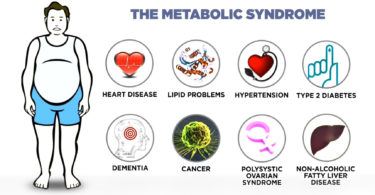Authors:
Dr. Nandini Dadhich1 and Dr. Dilip Dadhich2
- MD (PGR), Dept. of Materia Medica, Dr.M.P.K.Homoeopathic Medical College, Hospital & Research Centre, Jaipur (A constituent unit of Homoeopathy University, Jaipur, Raj. 302029) India.
- M.D.(Hom.), Professor and HOD, Dept. of Physiology & Biochemistry, Dr.M.P.K.Homoeopathic Medical College, Hospital & Research Centre, Jaipur (A constituent unit of Homoeopathy University, Jaipur, Raj. 302029) India.
ABSTRACT: LFTs are used for evaluating and treating patients with hepatic dysfunction. The liver is an organ which detoxifies various metabolites, synthesizes proteins and produces biochemicals necessary for digestion and growth. Interpretation of abnormalities in liver function tests is challenging. The various biochemical tests, their pathophysiology, and an approach to the interpretation of abnormal liver function tests is important to diagnose the disease related to liver.
INTRODUCTION: Biochemical tests are of immense value in diagnosis and monitoring of liver diseases. These tests are usually referred to as Liver Function Tests. These tests are widely performed biochemical tests to-
- Assess the hepatic functions.
- Assess nature of liver injury – hepatocellular or cholestasis
- Detect the disease – acute or chronic and / or mild or severe
INTERPRETATION CAUTION –
- Normal LFT value need not indicate absence of liver disease because liver has very large reserving capacity.
- Asymptomatic people may have abnormal LFT results.
CONDITIONS REQUIRING LIVER FUNCTION TEST –
- Jaundice
- Suspected li8ver metastasis
- Alcoholic liver disease
- Any undiagnosed chronic illness
- Coagulation disorder
- Annual checkup of diabetic patients undergoing drug therapy to check hepatotoxicity.
ASSESSMENT OF LIVER FUNCTION TESTS –
- Serum albumin (3.4 to 5.4 g/dL) – decrease in liver disease
- Serum globulin (2.0 to 3.5 g/dL) – increase in chronic hepatitis
- PT (11 to 13.5 seconds) – prolonged in liver diseases
- Alfa fetoprotein (less than 10 ng/mL) – increase in carcinoma
- Alfa 1 antitrypsin (100-300 mg/dL) – decrease in neonatal cholestasis, progressive juvenile cirrhosis, micro nodular cirrhosis
- Haptoglobin (50-220 mg/dL) – decrease in severe hepatocellular disease
- Transferrin (170 to 370 mg/dl) – decrease in cirrhosis
- Lipoprotein X (between 200 and 300 mg/dl) – increase in cholestasis
- Galactose tolerance test – half-life > 12 minutes in cirrhosis, infective hepatitis
- Amino acids – increased aromatic amino acid and decreased branched chain amino acids in hepatic coma and both increase in cirrhosis
- Serum bilirubin (0.1 to 1.2 mg/dL) – unconjugated increase in hemolytic and hepatocellular jaundice, conjugated increase in early phase of hepatocellular jaundice, obstructive jaundice
- Alkaline phosphatase (44 to 147 IU/L) – increased in hepatocellular jaundice, markedly increase in obstructive jaundice
- Aspartate amino transferase (Males: 6-34 IU/L, Females: 8-40 IU/L) – increase in hepatitis, malignancy
- Alanine amino transferase (Males:29 to 33 IU/L, Females:19 to 25 IU/L) – increase in liver diseases, very high in acute hepatitis
- AST:ALT ratio (<1) – increase in alcoholic hepatitis, hepatitis with cirrhosis, nonalcoholic steatohepatitis, liver metastasis; decrease in acute hepatocellular injury, extrahepatic obstruction
- Plasma bile acid (2 to 5 mg/dL) – post prandial rise in hepatic dysfunction
- Ammonia (15 to 45 µ/dL) – increase in cirrhosis
- GGT (9–48 U/L) – increase in cholestasis
- A/G ratio (1:1) – alter in liver disease
CONCLUSION: Lab test helps in diagnosing, monitoring and treating liver disease. Many liver maladies may be associated with normal levels and an asymptomatic healthy person may found with abnormal levels so a single test value’s little in screening. Therefore, correct knowledge regarding the alterations in the above mentioned enzymes is must for applicable intervention.
REFERENCES:
- Puri, D., 2011. Textbook Of Medical Biochemistry. 3rd ed. New Delhi: ELSEVIER
- Vasudevan, D., Sreekumari, S. and Vaidyanathan, K., 2011. Textbook Of Biochemistry. 6th ed. New Delhi: Jaypee Brothers Medical Publishers (P) Ltd.





